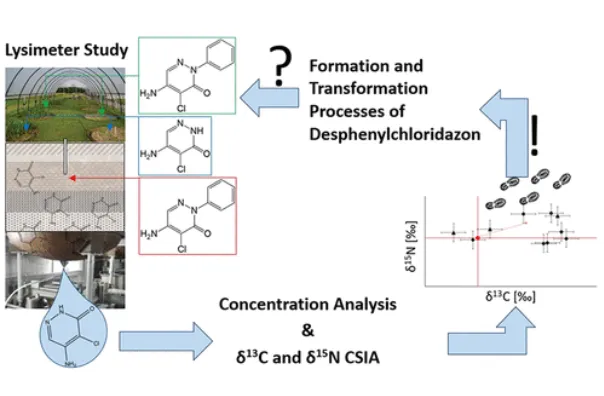A. Melsbach, C. Torrentó, V. Ponsin, J. Bolotin, L. Lachat, V. Prasuhn, T. Hofstetter, D. Hunkeler & M. Elsner
Environmental Science & Technology (2020)
Abstract
Desphenylchloridazon (DPC), the main metabolite of the herbicide chloridazon (CLZ), is more water soluble and persistent than CLZ and frequently detected in water bodies. When assessing DPC transformation in the environment, results can be nonconclusive if based on concentration analysis alone because estimates may be confounded by simultaneous DPC formation from CLZ. This study investigated the fate of DPC by combining concentration-based methods with compound-specific C and N stable isotope analysis (CSIA). Additionally, DPC formation and transformation processes were experimentally deconvolved in a dedicated lysimeter study considering three scenarios. First, surface application of DPC enabled studying its degradation in the absence of CLZ. Here, CSIA provided evidence of two distinct DPC transformation processes: one shows significant changes only in 13C/12C, whereas the other involves changes in both 13C/12C and 15N/14N isotope ratios. Second, surface application of CLZ mimicked a realistic field scenario, showing that during DPC formation, 13C/12C ratios of DPC were depleted in 13C relative to CLZ, while 15N/14N ratios remained constant. Finally, CLZ depth injection simulated preferential flow and demonstrated the importance of the topsoil for retaining DPC. The combination of the lysimeter study with CSIA enabled insights into DPC transformation in the field that are superior to those of studies of concentration trends.
